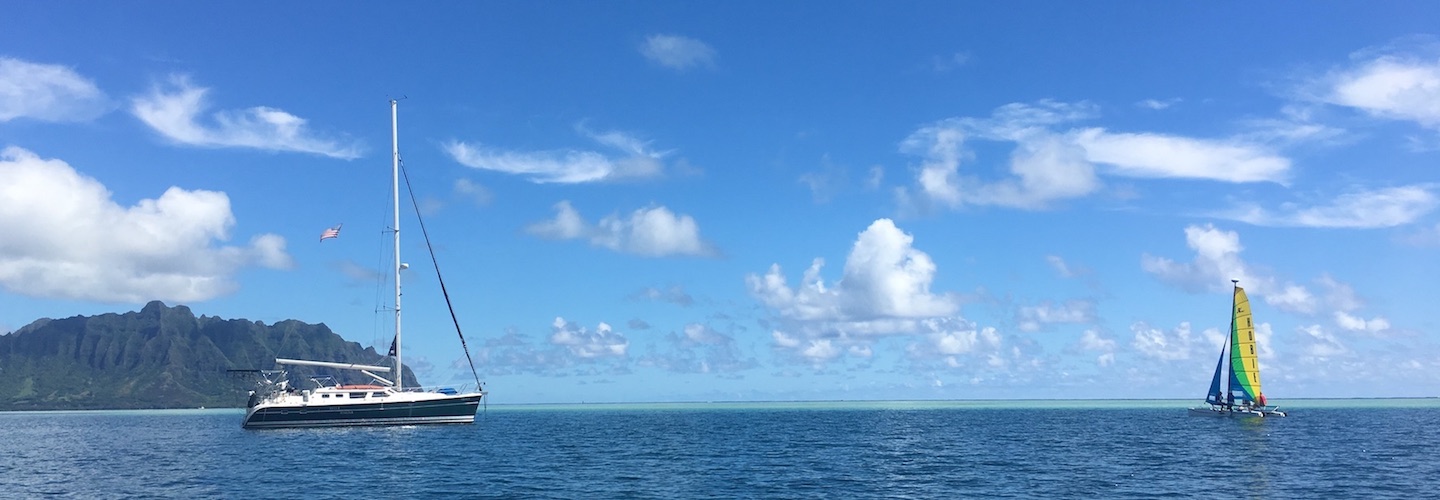Lately, there has been a lot of attention in the news around humanity’s carbon footprint and ways to minimize it, both at individual and global levels. I constantly strive to learn more about it and apply those lessons to our every day living.
Bella Marina is already a very green boat, and I’m not talking just about its hull color. We produce all our energy from our 1.6 KW solar array, and move around using the power of wind, with the few exceptions when our Diesel engine comes on rainy or windless days. Traveling and living on a sailboat is, almost by definition, one of the greenest ways to live a modern life with all the conveniences one might still desire. We have no land car, and our dingy (also known as the ‘cruiser’s car’) has an all-electric engine that charges off solar power. We opted for the Torqueedo knowing we might sacrifice speed and some convenience, but save the turtles, the sharks, and the dolphins. We desalinate water using solar energy, run all our appliances (Nespresso, fridge, freezer, dishwasher, washing machine, cooking appliances) and computers off solar-electric, and carefully manage our compost and garbage. Everything is super-efficient because we choose to be self-sufficient for long periods of time.
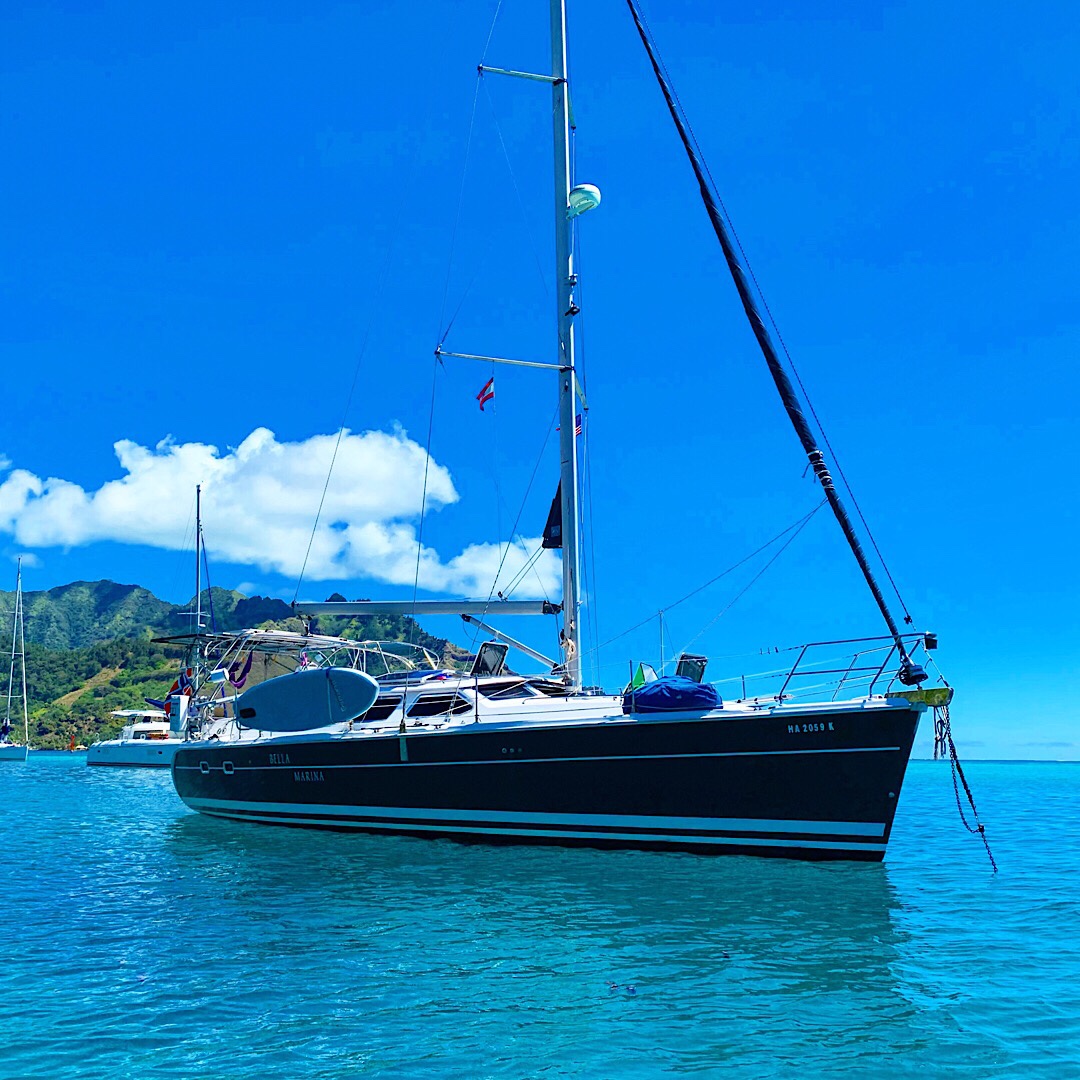
Last year I became curious about solar cooking. For those of you who know me, you will remember I don’t, ahem, “really” cook, so this might sound funny. After all, just a while ago I was championing Ham & Cheese sandwiches as the perfect day-to-day passage food (still believe that :)). We do eat though, and usually enjoy simple, fresh, less-than-5-ingredients type meals. When fresh fish and our favorite go-to Poisson Cru is not available, we tend to find some local protein and get grillin’. There are however certain cuts and types of meats that are better when slow-cooked, like chicken, pork, osso bucco, and leg of lamb. Enter the Solar Oven!
I’ve done a fair amount of research on what other cruisers were using (our friend Behan has a really good article on her blog Sailing Totem), but I found most options to be either too large to store properly on our boat, too expensive, or both. I toyed with the idea of DIY solar ovens, but I wasn’t motivated enough – after all, I had a bunch of other options to cook with. Eventually, I decided to take a chance on the Sunflair Solar Oven – I loved its simple design, it was easy to fold and store, it came with all the pots and trays needed in one package, it was less than half the price of the ‘other’ ovens, and it was available on Amazon for ease of purchase/shipping/warranty. We shipped it to our gracious friends in California and picked it up on our way back from our winter travels. The packaging was large-ish, but true to the dimensions mentioned for shipping – it was so efficiently packed that I left it in its original box before putting it in the ‘parts’ suitcase we flew back with. I got to use it fairly soon after we got back to the Tuamotus – frozen chicken is the most available, affordable protein one can find in the deep freezers of Fakarava.
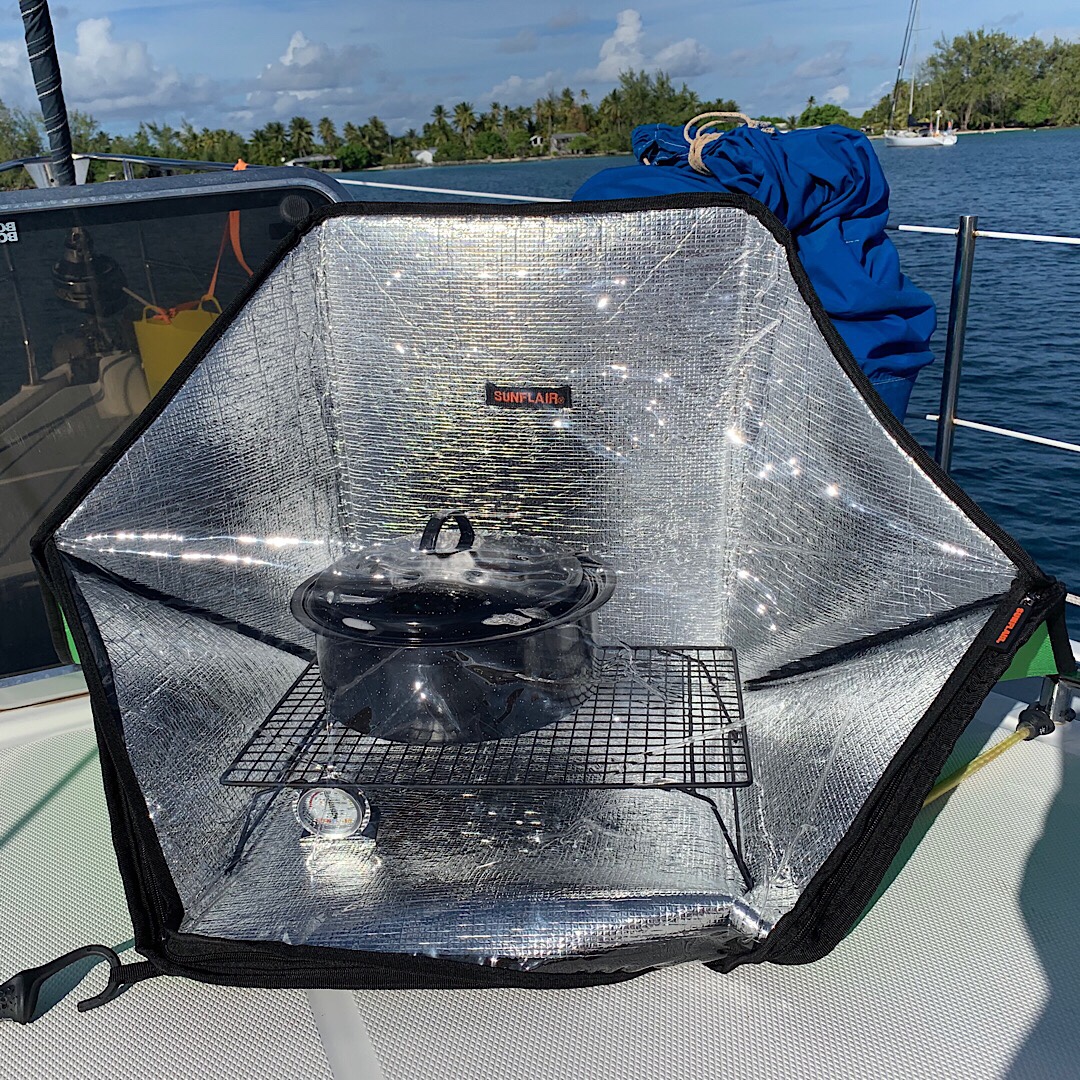
So far, I love it. It’s just the right size for cooking for two people, which is important since it takes most of the day to properly cook meats. It comes with a simple cook-book, and most recipes call for 3-4 hours at the right temperature of slow-cooking, which can usually be achieved between 10 AM and 2 PM. If you have enough clouds passing by, it might take 5-6 hours, or until 4 PM. The veggies, if you can find them, take only 1-2 hours. It’s basically impossible to over-cook meats, and really hard to over-cook veggies, so I usually just throw everything in the oven in the morning and forget about it until dinner time, with a couple of checks to make sure we’re still pointing at the sun if the wind changes around. I tie it down on the bow with bungee cords and so far it’s worked well in gusts up to 30 knots (not that I recommend starting in high winds, it’s just nice to know your dinner will not be spilled on the bow when the wind picks up). It stays nice and warm even after the sun doesn’t have the power to cook anymore.
It’s really nice to be able to do everything on one pot, no extra mess and splatter. It came with a fairly large stone ware pot (I reckon you could cook a whole chicken in there), a couple of silicone pots for veggies/eggs, and two tray systems for baking (which I never used). The promise of no splatter/ease of cleanup was a big draw for me originally, and I was not disappointed.
It folds/packs down really small without the pots, so it was super easy to store on the boat below – it goes on top of the dishwasher, where our old ‘traditional’ gas oven used to be (we took that out almost 10 years ago when we went low-carb).
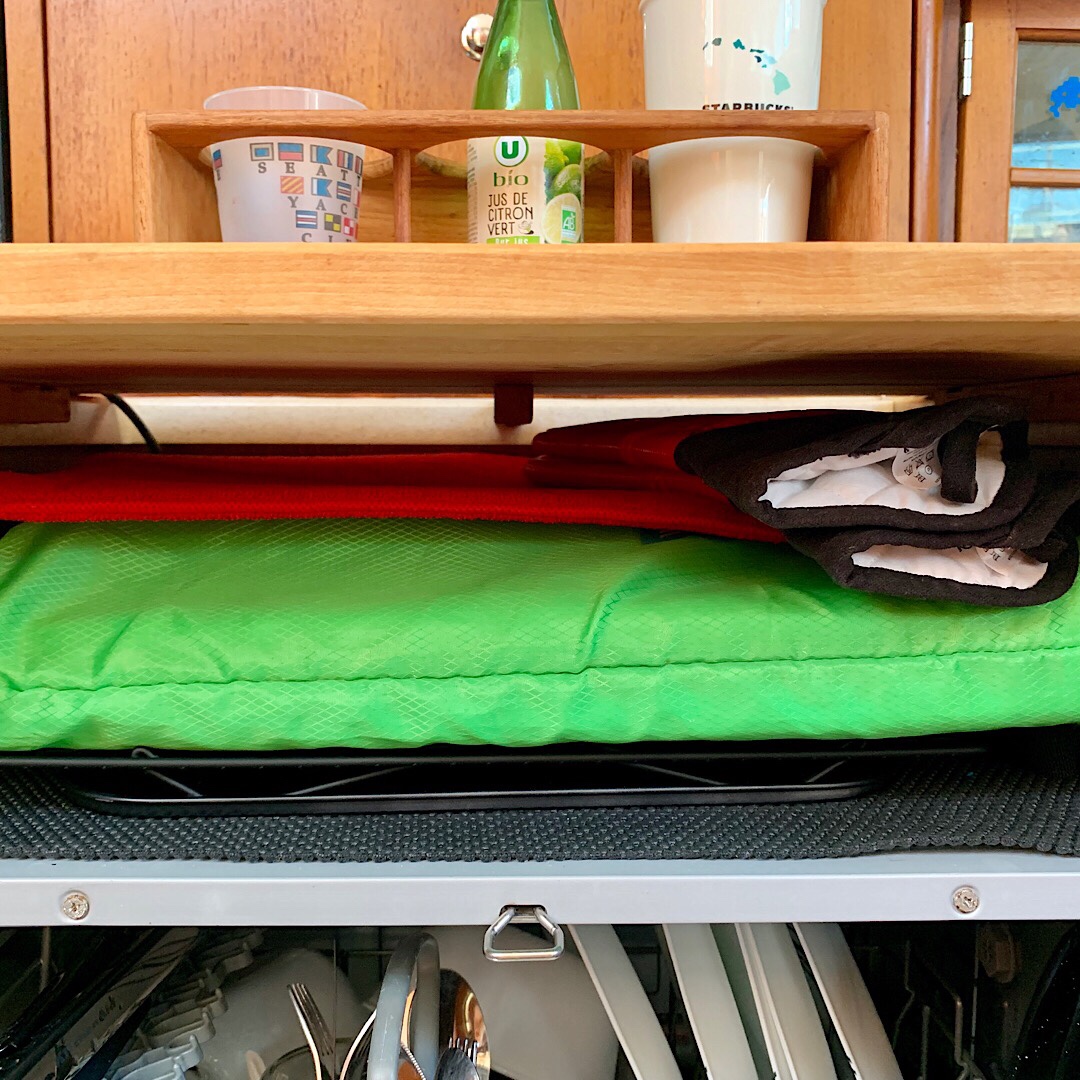
One of the disadvantages of solar cooking is that you always need direct sun – so if it’s a mostly overcast day, or if it starts sunny and then you get a 2-hour squall, you will need to finish cooking in a more conventional manner. It happened to me twice, but it was pretty easy to transfer over. The other inconvenience is that you have to plan in advance and start your dinner in the morning. Now that we have time though, we have our meals planned out and fairly predictable, so it’s not that big of a deal. And if I had chicken planned for the day but we wake up to a rainy morning, it’s pretty easy to swap the plans.
So far we’ve been enjoying roast chicken, pork carnitas, lamb, quiche, boiled eggs (fun fact: no water needed to ‘boil’ eggs in a solar oven), and a speared fish. Spinach with bacon is another favorite, carrots take a nice ‘steamed/baked’ consistency when slow cooked with butter, and I bet broccoli and brussel sprouts would do well too if I could find them around here. We’re really not into baking (see Low Carb), but the recipe book has a couple of examples and any slow-cooker bread/cookie/crumble would probably do well.
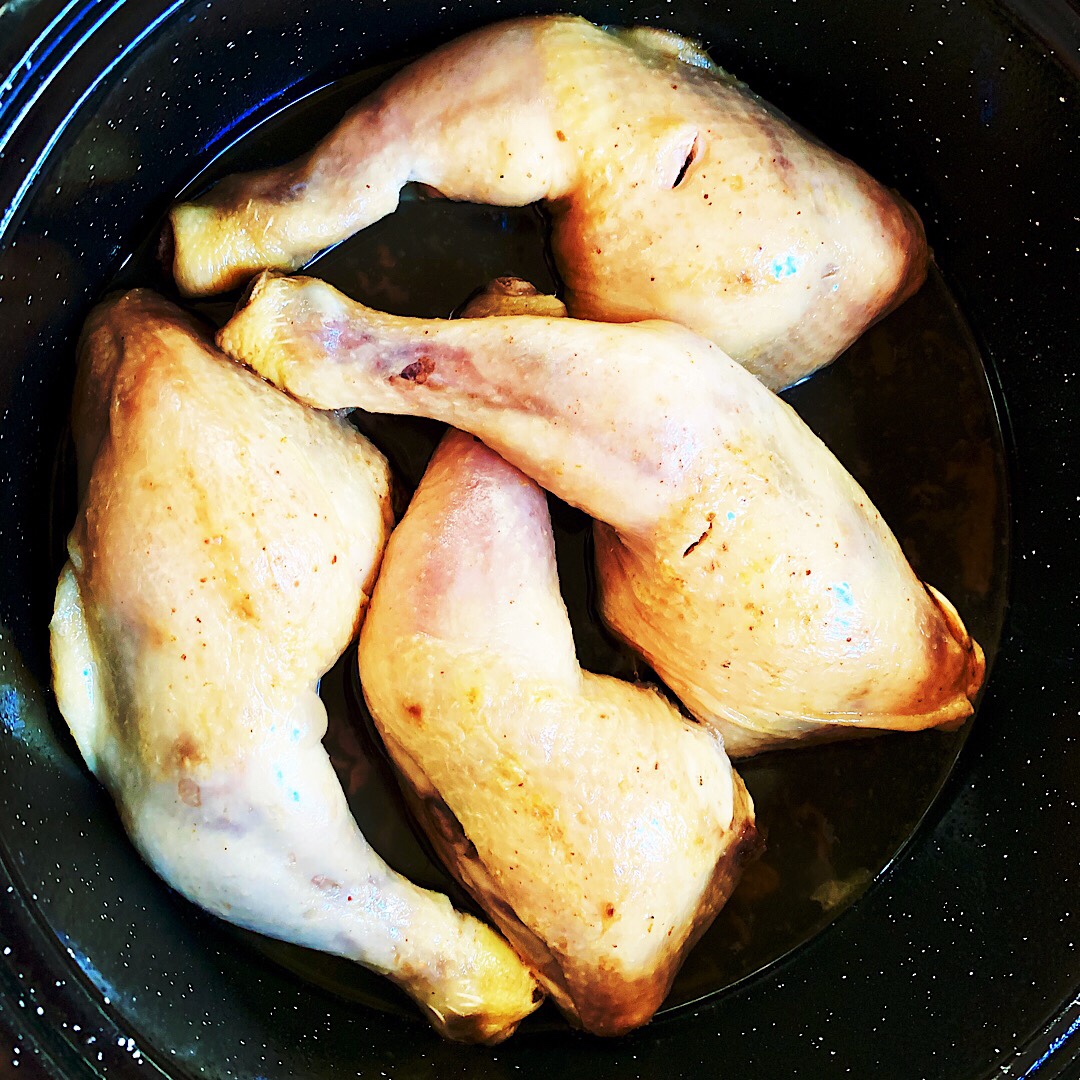
So when do we use the solar oven vs. electric grilling or pan cooking? It’s always when we have meats that are better slow cooked (1-2 times a week), and that would make a mess splattering around in the electric griddle (like chicken legs and drumsticks). Using the power of the sun directly for slow-cooking is also more efficient than the solar-panel->battery bank->inverter->electric appliance route, and it allows us to do other high-power-consuming activities at the same time, like making water AND cooking during the same high-solar-power window.
Noting that I am in no way sponsored or connected with the company, I’m glad we got the Sunflair portable solar oven solution, and I would highly recommend it to anyone looking to supplement their cooking with solar on their boat or off-the-grid home.
